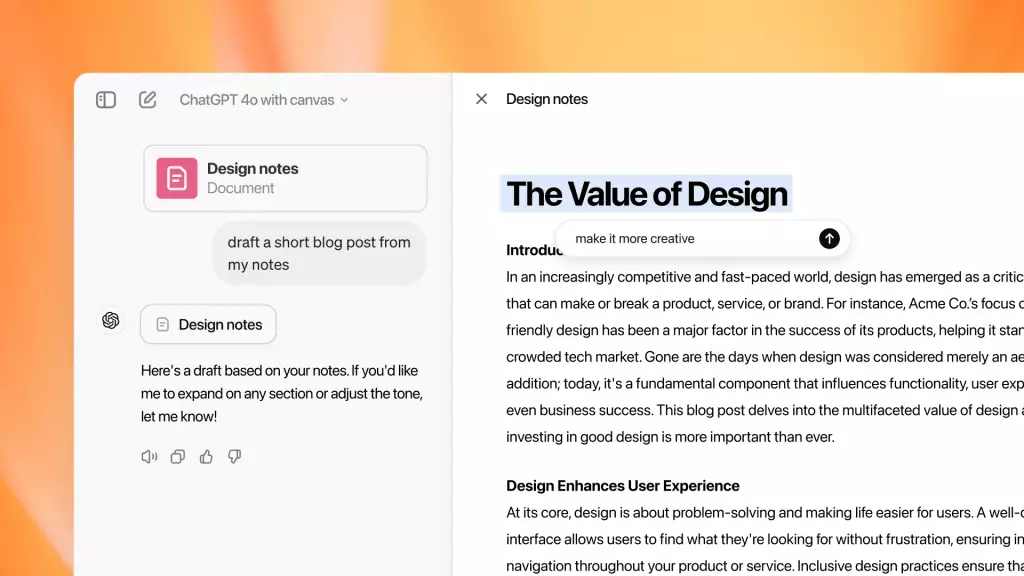In a significant move that promises to reshape the way users interact with AI, OpenAI has made its Canvas tool available to all ChatGPT users, marking a departure from its initial limitation to premium subscribers. This announcement, made during the company’s festive “12 Days of OpenAI” series, not only democratizes access to cutting-edge digital editing capabilities but also introduces an array of new features that aim to enhance productivity and creativity in digital workflows.
Canvas, originally unveiled in October, alters the conventional ChatGPT interface to facilitate more fluid interaction with content. It moves away from the traditional top-down chat layout—where a conversation occupies the upper half of the screen and a text entry box sits below it—to a more innovative side-by-side design. The left sidebar features the ongoing dialogue with ChatGPT, while the right sidebar serves as a canvas for live editing, whether that involves coding, drafting documents, or even brainstorming ideas. Such a layout is especially beneficial for users who require immediate feedback and suggestions while working on projects.
One of the standout aspects of Canvas is its ability to reflect changes instantly on the right-hand side, rather than producing separate text outputs like in traditional formats. This functionality not only saves time but allows for a more interactive and iterative creative process. Users can request modifications, and the system will adapt without further ado, which is particularly valuable for coding or collaborative writing tasks. Canvas does not merely serve as a repository for content; it actively assists in content creation by generating suggestions in real time.
With the recent updates, Canvas is now integrated into GPT-4o, eliminating the cumbersome need for users to switch between different models. Instead, the system intuitively launches whenever the user inputs certain prompts or pastes content into the text box. This streamlined approach is designed to enhance user efficiency and maximize engagement with the platform. Currently, availability is restricted to the web version and Windows application of ChatGPT, implying a focused yet progressive rollout.
Canvas’s capabilities extend to running Python code, rectifying limitations that previously required users to export code into external environments for testing. This level of integration brings it closer to the features offered by competing platforms like Anthropic’s Claude Artifacts, which allows users to preview live results from their code. Notably, during demonstrations, OpenAI illustrated how Canvas could generate and visualize graphics based purely on coding commands, enabling analysts and developers to tweak data inputs before achieving polished outputs.
In addition to running code, Canvas includes features for debugging, offering suggestions to fix errors as they arise. This proactive approach fosters a more intuitive problem-solving experience for users and enhances overall coding efficiency. For individuals creating custom GPTs, the integration of Canvas by default eases the setup process while still granting them control over how and when the tool activates.
OpenAI’s recent updates to Canvas not only reflect its commitment to enhancing user experience but also signify a broader trend toward collaborative intelligence in digital tools. By allowing users to access advanced functionalities regardless of their subscription tier, OpenAI is creating an inclusive environment where tools are tailored for creativity and innovation. As technology progresses, it will be interesting to see how users tailor these capabilities to meet their own unique demands, ultimately making Canvas a centerpiece for collaborative digital projects.

